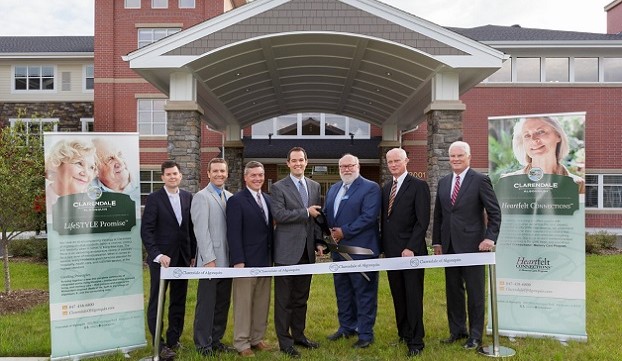
CHICAGO—Developers and lenders in the seniors housing sector have for years only allowed new construction to proceed at a modest pace. The development community's aim was to avoid the mistakes made in past booms, when too many inexperienced operators built too much new product. However, developers have recently picked up the pace a bit as an aging population has steadily boosted demand.
And according to a new report from the National Investment Center for Seniors Housing & Care, the seniors housing annual inventory growth rate in the first quarter of 2017 was 3.4%, up 0.2 percentage point from the prior quarter and the fastest pace since at least 2006.
“It was another active quarter for inventory growth, with nearly 4,800 units added to the seniors housing stock” in 31 primary markets, says Beth Burnham Mace, chief economist for Annapolis, MD-based NIC. “At the same time, demand slowed during the quarter, as is typically the case in the first quarter due to the seasonal effects of the winter months. Some of the slowdown in net absorption may also reflect the severity of the 2016/2017 flu season.”
The pace of new construction helped push down the US occupancy rate for seniors housing properties, according to NIC. The rate in the first quarter averaged 89.3%, a decrease of 0.3 percentage point from the prior quarter and was down 0.6 percentage point from one year earlier.
That was 2.4 percentage points above its cyclical low of 86.9% during the first quarter of 2010 and 0.9 percentage point below its most recent high of 90.2% in the fourth quarter of 2014.
Seniors housing annual absorption was 2.8% as of the first quarter of 2017, up 0.1 percentage point from the fourth quarter of 2016 and up 0.2 percentage point from one year earlier, NIC adds.
The expansion of the nation's inventory has not hurt rental rates. During the first quarter of 2017, the average rate of seniors housing's annual asking rent growth was 3.3%, up from 3.1% in the first quarter of 2016.
“Considering the continued strong inventory growth and sustained levels of construction, this solid same-store rent growth is notable,” says Chuck Harry, NIC's chief of research and analytics.

CHICAGO—Developers and lenders in the seniors housing sector have for years only allowed new construction to proceed at a modest pace. The development community's aim was to avoid the mistakes made in past booms, when too many inexperienced operators built too much new product. However, developers have recently picked up the pace a bit as an aging population has steadily boosted demand.
And according to a new report from the National Investment Center for Seniors Housing & Care, the seniors housing annual inventory growth rate in the first quarter of 2017 was 3.4%, up 0.2 percentage point from the prior quarter and the fastest pace since at least 2006.
“It was another active quarter for inventory growth, with nearly 4,800 units added to the seniors housing stock” in 31 primary markets, says Beth Burnham Mace, chief economist for Annapolis, MD-based NIC. “At the same time, demand slowed during the quarter, as is typically the case in the first quarter due to the seasonal effects of the winter months. Some of the slowdown in net absorption may also reflect the severity of the 2016/2017 flu season.”
The pace of new construction helped push down the US occupancy rate for seniors housing properties, according to NIC. The rate in the first quarter averaged 89.3%, a decrease of 0.3 percentage point from the prior quarter and was down 0.6 percentage point from one year earlier.
That was 2.4 percentage points above its cyclical low of 86.9% during the first quarter of 2010 and 0.9 percentage point below its most recent high of 90.2% in the fourth quarter of 2014.
Seniors housing annual absorption was 2.8% as of the first quarter of 2017, up 0.1 percentage point from the fourth quarter of 2016 and up 0.2 percentage point from one year earlier, NIC adds.
The expansion of the nation's inventory has not hurt rental rates. During the first quarter of 2017, the average rate of seniors housing's annual asking rent growth was 3.3%, up from 3.1% in the first quarter of 2016.
“Considering the continued strong inventory growth and sustained levels of construction, this solid same-store rent growth is notable,” says Chuck Harry, NIC's chief of research and analytics.
Want to continue reading?
Become a Free ALM Digital Reader.
Once you are an ALM Digital Member, you’ll receive:
- Breaking commercial real estate news and analysis, on-site and via our newsletters and custom alerts
- Educational webcasts, white papers, and ebooks from industry thought leaders
- Critical coverage of the property casualty insurance and financial advisory markets on our other ALM sites, PropertyCasualty360 and ThinkAdvisor
Already have an account? Sign In Now
*May exclude premium content© 2025 ALM Global, LLC, All Rights Reserved. Request academic re-use from www.copyright.com. All other uses, submit a request to [email protected]. For more information visit Asset & Logo Licensing.








